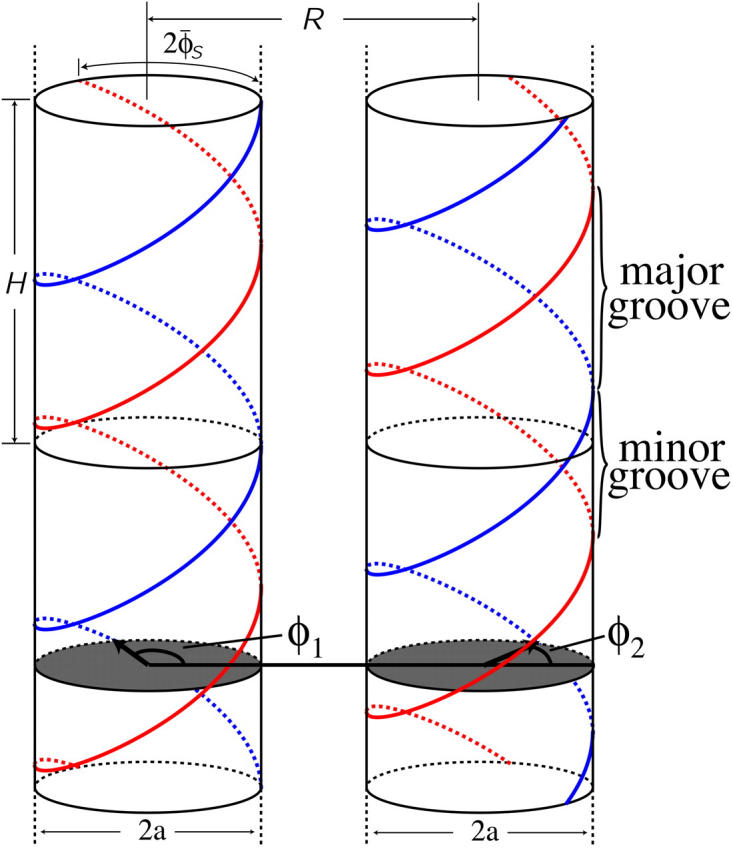FIGURE 1.

Illustration of two model DNA molecules at an interaxial separation R. The molecules are assumed to be rigid, long cylinders of radius a with a helical pitch length of H ≈ 34 Å. In between the two DNA helices a major and a minor groove are formed, due to the asymmetry in the azimuthal angle between the two helices, 2φs ≈ 0.8. See text and Fig. 2 for an explanation of the angles φ1 and φ2.
